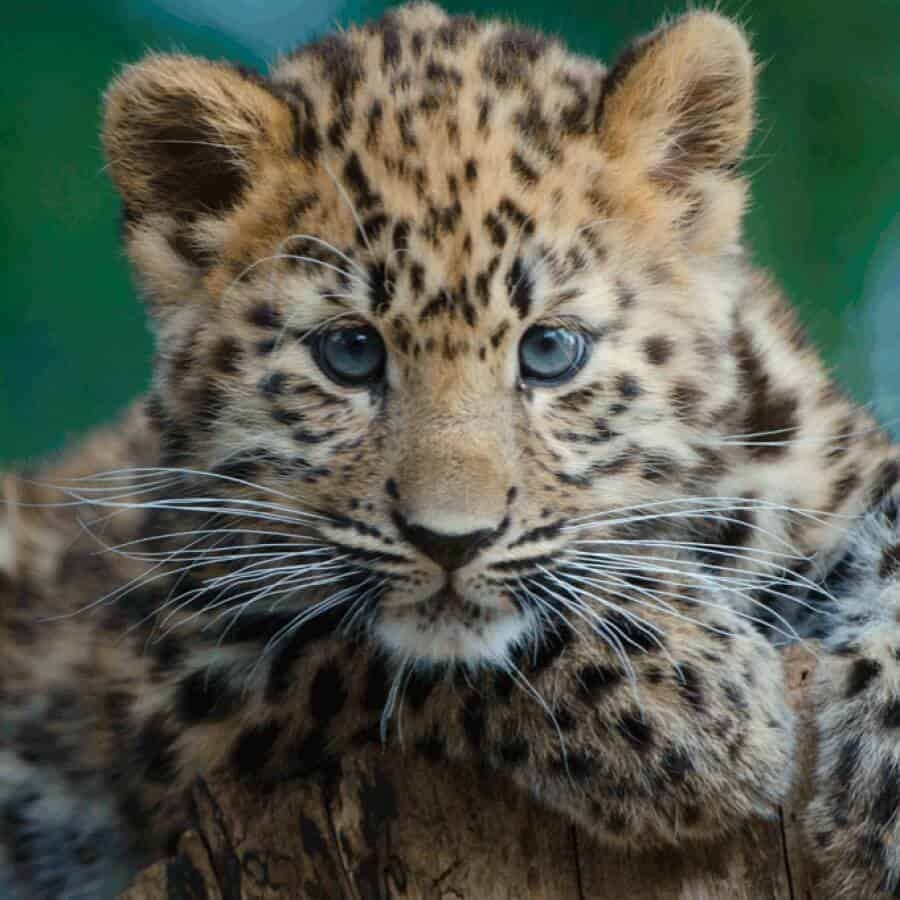From a young age, Youth Time contributor Leigh Woods has been passionate about wildlife. After spending a number of years leading safaris across southern and eastern Africa, his empathy and compassion toward animals grew stronger. As some of the world’s most iconic species edge ever closer toward extinction, so do many that the average person may never even have heard of. Here, Leigh highlights some of the planet’s extraordinary fauna that may soon be lost forever.
As self-appointed custodians of the beautiful planet we inhabit, it is surely our moral duty to look after the welfare of all species that call Earth home. Homo sapiens won the evolutionary race so long ago that it’s almost hard to believe any genuine competition ever existed.
In the modern era, “social responsibility” is a term I hear almost on a day-to-day basis. Those who live by this ethos often consider the positive impact they can contribute to human society, but many forget about the environment and the wildlife that plays a pivotal role in balancing ecosystems that our very lives depend upon.
It is fairly common knowledge now that the human race depends on nature, but that nature has no reliance on us. Despite this general awareness, rainforests are being cut down at an alarming rate. Carbon emissions are melting sea ice and increasing water temperatures are leading to coral bleaching. Plastics and other harmful waste is being dumped into the oceans and literally choking marine life to death. Threatened species are being hunted and poached toward the brink of extinction.
While it is clear that our unsustainable practices will eventually come back to haunt us, the effects of our actions are already proving to be extremely detrimental to many other species. By now, the vast majority of people will be know about the plight of iconic species such as the Giant Panda, Siberian Tiger and Polar Bear. Here, we take a look at some of the lesser known species threatened with extinction, many of which owe their vulnerable status to the actions of mankind.
Amur Leopard
With an estimated figure of only 57 individuals prowling the southeastern regions of Russia between Vladivostok and the Chinese border, the Amur Leopard is the rarest big cat on the planet. Threats to these critically endangered felines include poaching, forest fires and exploitation, encroaching civilization and habitat loss. Due to their alarmingly small population, they are also at risk from inbreeding depression.
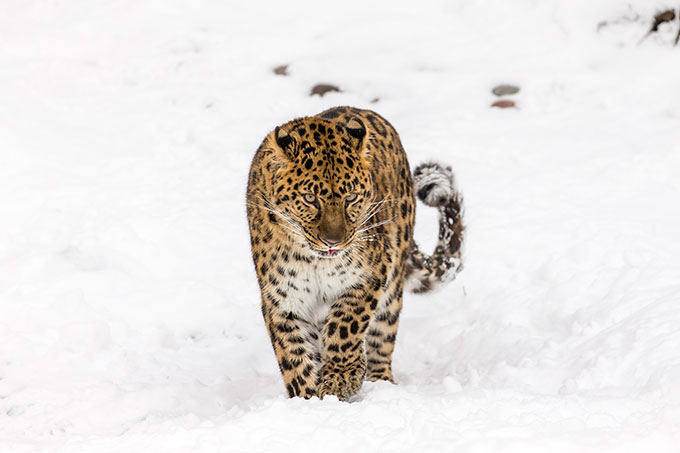
Amur Leopard / Photo: Shutterstock
Baiji
Also known as the Chinese River Dolphin, the Baiji is a functionally extinct species of freshwater cetacean. As China began to industrialize, their population declined emphatically due to factors such as fishing, transportation and hydroelectricity. The last know living Baiji was spotted back in 2002, but after a number of unofficial sightings including a video tape caught by a Chinese man in 2007, it has been tentatively confirmed that there may be up to 20 individuals still living somewhere in the Yangtze River.
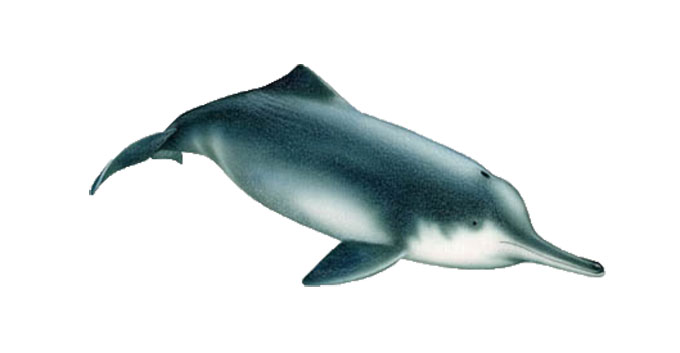
Baiji / Photo: Wikipedia
Kakapo
The only parrot incapable of flight, the Kakapao was once widespread on all three main islands of New Zealand and was once considered the third most numerous of all species residing on the Oceanian nation. However, since human settlement of the country, the Kakapao population has plummeted to only around 126 birds, making them extremely susceptible to extinction. The ground-dwelling birds were once hunted for food and their feathers which were turned into cloaks, but recent conservation efforts have helped them to become a protected species.
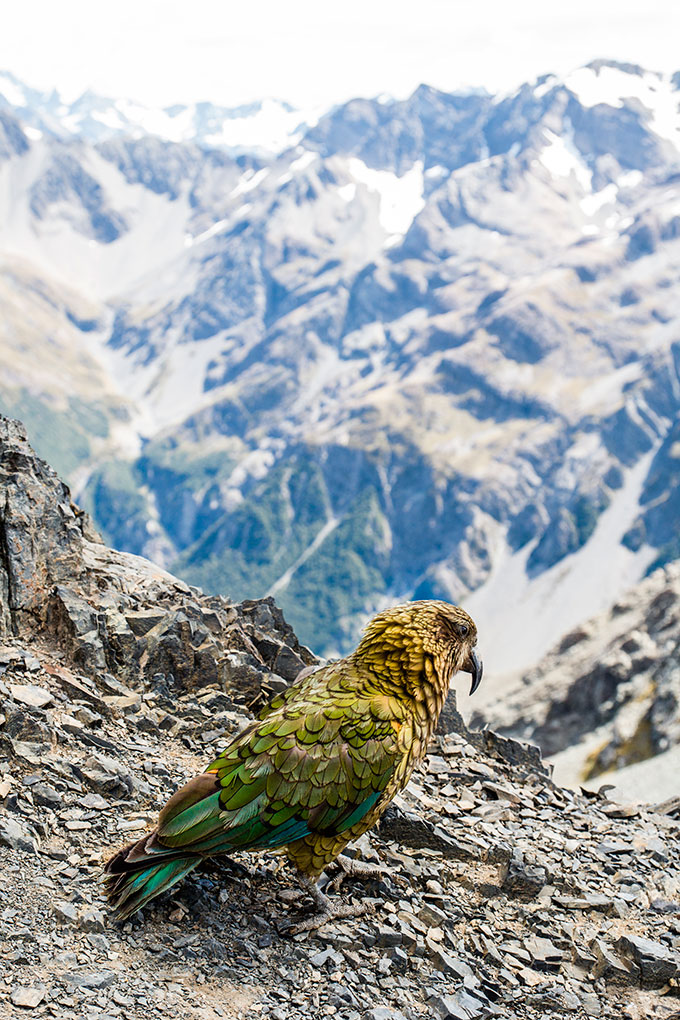
Kakapo / Photo: Shutterstock
Javan Rhinoceros
As one of the most discernible species on the planet, most, if not all know of the rhinoceros. The more zoologically curious will probably also be aware of the black and white rhino that reside in sub-Saharan Africa, both of which are endangered. What many don’t realize, however, is that three other species walk the grasslands, forests and swamps of south-east Asia. The trio are always severely threatened with extinction but none more so than the Javan Rhinoceros. They are continuously poached for their horns which can reach as much as $30,000 per kilo on the black market. Sadly, it is estimated that only 56-68 individuals remain in the wild.
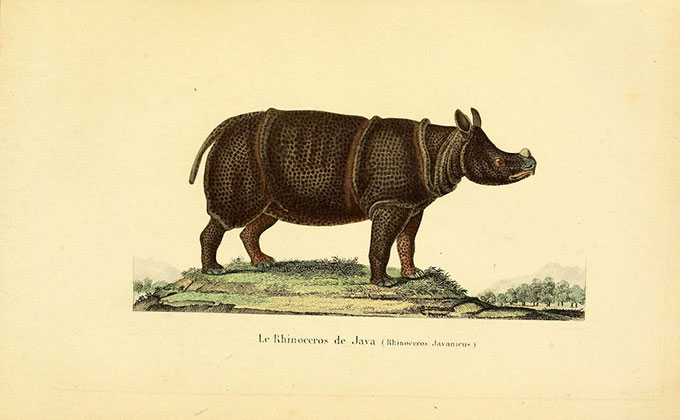
Javan Rhinoceros / Photo: Biodiversity Heritage Library
Cross-river Gorilla
Estimated at between 200-300 individuals, the Cross-river Gorilla is very similar in appearance to the Western Lowland Gorilla. They live in a region heavily populated by humans around the borders of Cameroon and Nigeria. Their low numbers are due to deforestation for timber and clearing space for agriculture and livestock. Human encroachment plays another crucial factor in their survival, with individuals being highly vulnerable to the diseases and viruses that we carry.
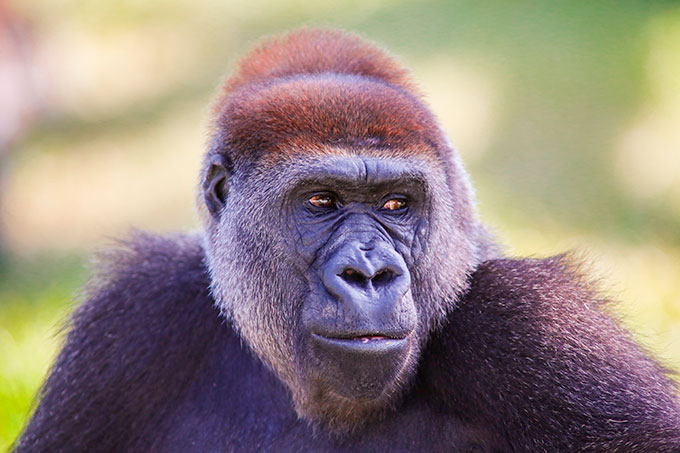
Cross-river Gorilla / Photo: Shutterstock
Giant Ibis
By far the largest of the world’s ibises, the Giant Ibis is considered critically endangered on the IUCN Red List with less than 100 pairs left in the wild. Primary causes include clear-cutting of forests for rubber plantations and drainage of wetlands for cultivation. Human warfare and local droughts, possibly in relation to global climate change have severely compromised the behavior and breeding habitats of the Giant Ibis in Cambodia, Laos and possibly Vietnam.
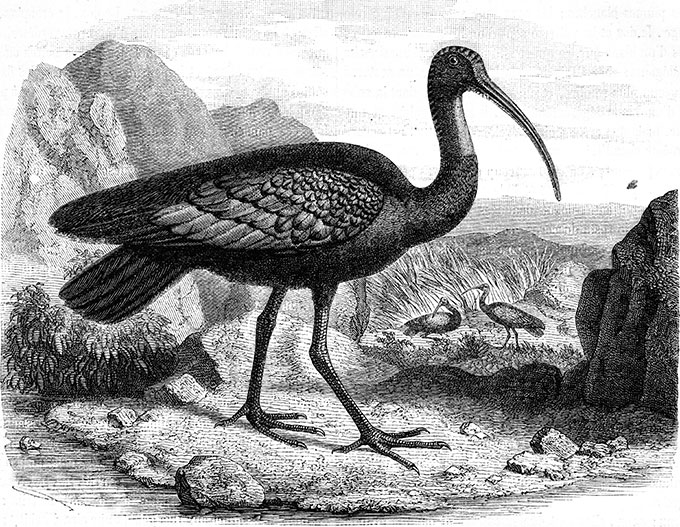
Giant Ibis / Photo: Shutterstock
Leatherback Sea Turtle
On a global scale Leatherback Sea Turtles are considered vulnerable, but there are many subpopulations which are critically endangered. The largest of all sea turtle species, Leatherbacks are also one of the most migratory. Despite their wide distribution, their numbers have diminished in the past century owing to irresponsible human activities. This includes intense egg collection, entanglement in lobster pot ropes, bycatch and physical and chemical pollution. Many Leatherbacks also die from malabsorption and intestinal blockage when ingesting plastic bags they mistake for their jellyfish prey.
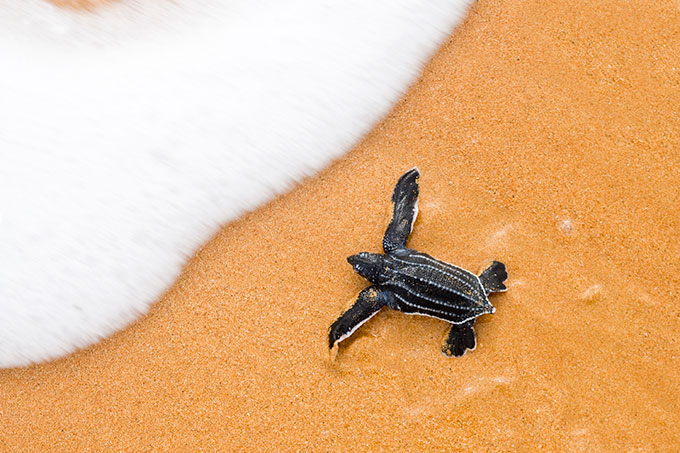
Leatherback Sea Turtle / Photo: Shutterstock
Saola
Often referred to as the “Asian Unicorn”, Soala are so rare and elusive that they have only been categorically documented by scientists in the wild on four separate occasions. Their restrictive habitat in the Annamite Mountains of Vietnam and Laos and aversion to human proximity make the Soala highly vulnerable to habitat loss and fragmentation. Closely related to bovines, goats and antelopes the species also suffer losses through illegal hunting for their meat and fur. Only discovered in 1992, it is not yet known exactly how many Soala exist, but the species is widely considered to be critically endangered.
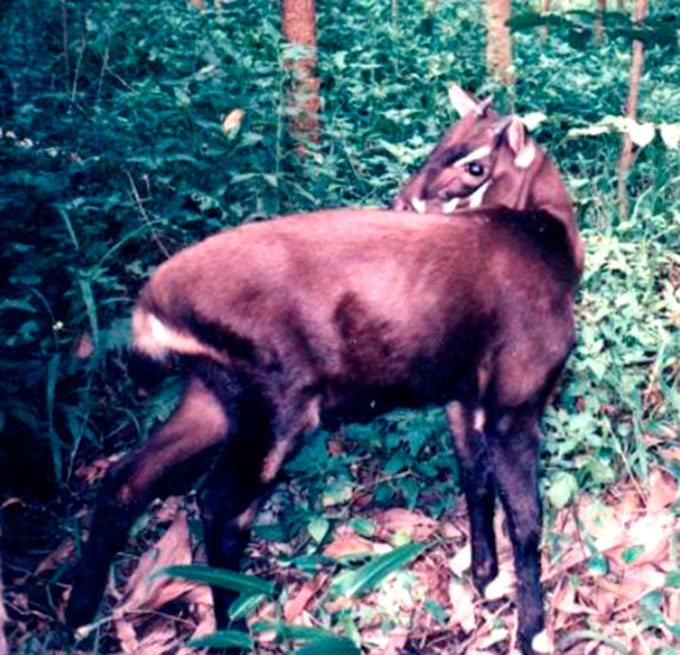
Saola / Photo: Wikipedia
Giant Chinese Salamander
Of all the animal classes, Amphibians are most vulnerable to the effects of climate change and therefore the greatest indicators. The Giant Chinese Salamander was once widely distributed across China, but human interventions such as overhunting for food and medicine, destruction of habitat, and global warming have all contributed to their downfall. Most Chinese Giant Salamanders stop feeding at water temperatures in excess of 20 °C and with water temperatures rapidly rising, it may well spell the demise of the world’s largest amphibian.
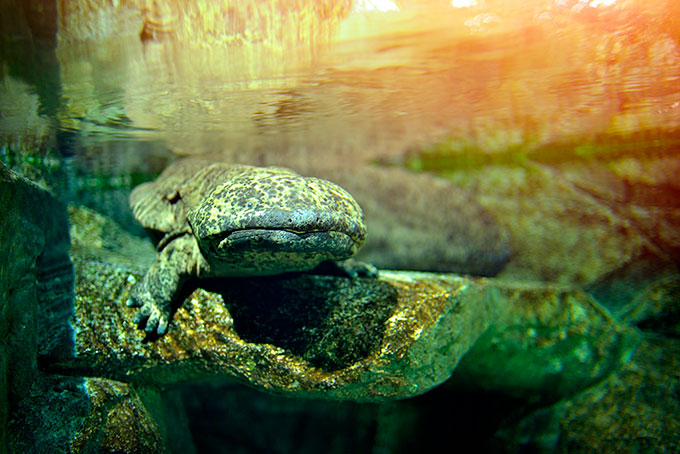
Giant Chinese Salamander / Photo: Shutterstock
Vaquita
Only discovered in 1958, the Vaquita is a tiny porpoise considered to be the world’s rarest marine mammal. Almost 60 years after the first sighting, the species is now on the brink of extinction with only 30 individuals swimming off the coasts of the northern regions of the Gulf of California. Their plight is mostly due to illegal fishing operations, with many individuals caught and drowned in gillnets. Unfortunately, the future of the Vaquita looks very bleak.
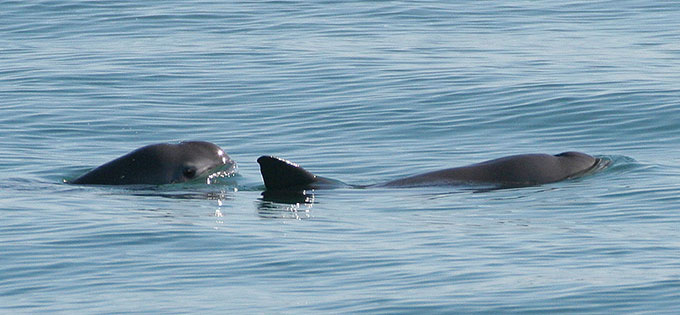
Vaquita / Photo: Wikipedia
Support us!
All your donations will be used to pay the magazine’s journalists and to support the ongoing costs of maintaining the site.
Share this post
Interested in co-operating with us?
We are open to co-operation from writers and businesses alike. You can reach us on our email at [email protected]/[email protected] and we will get back to you as quick as we can.
